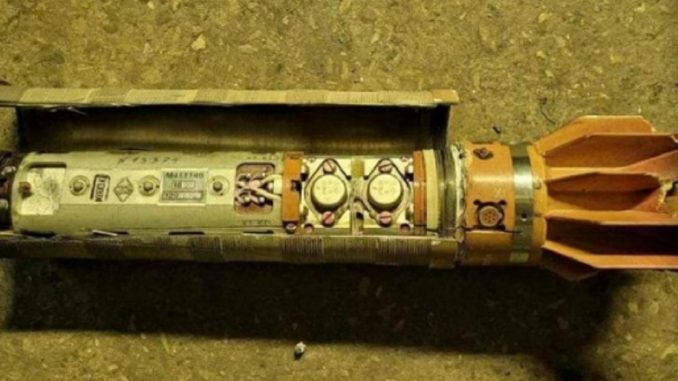
In “The Art of War,” Sun Tzu stated, “All warfare is based in deception.”
The timeless truth of that observation from a Chinese strategist of the 6th Century B.C. is on full display in the ongoing invasion of Ukraine by Russia, with the discovery of a dangerous example of deception in contemporary warfare.
To counter Ukrainian air defenses, Russia has been using short-range ballistic missiles that launch decoy munitions while carrying their deadly payloads. This innovation surprised Western observers, The New York Times reported on Monday.
Identifying the 16-inch long, dart-shaped objects recovered in Ukraine as part of a decoy system solved a mystery that began shortly after the invasion started in late February. At first, the strange recovered munitions were puzzling, as demonstrated in a Twitter post by CAT-UXO, a site identified by the Times as intended for “military and civilian bomb disposal experts.”
This is an unidentified munition currently being found in Ukraine. At the moment an official identification has not been made. Any additional images, technical information or identification is very much appreciated: https://t.co/dtWwdIJaV3 pic.twitter.com/p2lWFeljYd
— CAT-UXO (@CAT_UXO) March 5, 2022
As reported by the U.K. Daily Mail, missile decoys are known in military jargon as “penetration aids,” or PENAIDs, and were developed during the Cold War.
According to The Drive, an automotive website with extensive coverage of military matters, PENAIDS were originally deployed on long-range missiles carrying nuclear warheads. They were created in response to the development of anti-missile defense systems.
The idea is to overwhelm enemy air defenses with multiple potential threats, so the real devices have better odds of striking their targets.
The Russian innovation has been to add the decoys to their short-range Iskander-M missiles, according to the Times, which noted, “The incorporation of the devices into weapons like the Iskander-M that have conventional warheads has not been previously documented in military arsenals.”
These so-called short-range weapons still have a range of 310 miles, according to The Drive.
The rockets are fired from mobile launchers, which increases their reach and unpredictability. Both The Drive and the Daily Mail reported that some Iskander-Ms were launched into Ukraine from the Russian-friendly country of Belarus.
The decoys launch when the Iskander-M detects it has been targeted by air defense systems, according to The Times.
Iskander-Ms were already hard to defend against, as the highly elusive missiles fly at a low trajectory. The PENAIDS add multiple ways for them to counter antimissile systems.
In the Daily Mail report, Michael Duitsman, a research associate at the James Martin Center for Nonproliferation Studies in Monterey, California, explained three ways PENAIDs can work:
As physical objects, they clutter up radar. They can use flares to create hotspots for heat-seeking weapons. Electronically, they can transmit signals disrupting radar and other electronics.
“’The Iskander-M PENAID does all three,” Duitsman said.
Professor Jeffrey Lewis, a non-proliferation expert at the James Martin Center, believes he identified how the missile releases the decoys.
The Iskander can release PENAIDS from six ports in the base of the missile. You can see the ports in this image — they are the big circles around the base on this training dummy. pic.twitter.com/uie74C6Zbe
— Dr. Jeffrey Lewis (@ArmsControlWonk) March 15, 2022
Lewis told the Times that Russia has now given away a secret of its military abilities because the Russian military has to know that the missiles will be studied by Western experts to devise effective countermeasures.
We must hope so. The Daily Mail noted that Ukraine has not been effective in countering the ballistic missiles. It is unknown how much of that failure is due to the use of PENAIDs.
According to The Drive, Iskander-Ms can be fitted with nuclear warheads. It would only take one such missile introduced into the Ukrainian conflict to cause catastrophic results.
Despite pressure from many nations, Russian President Vladimir Putin has persisted with the invasion. The response from the West has been inconsistent at best.
As the combat continues, Russia will give away more of its secret abilities and technology. We must learn to counter them before it’s too late.
